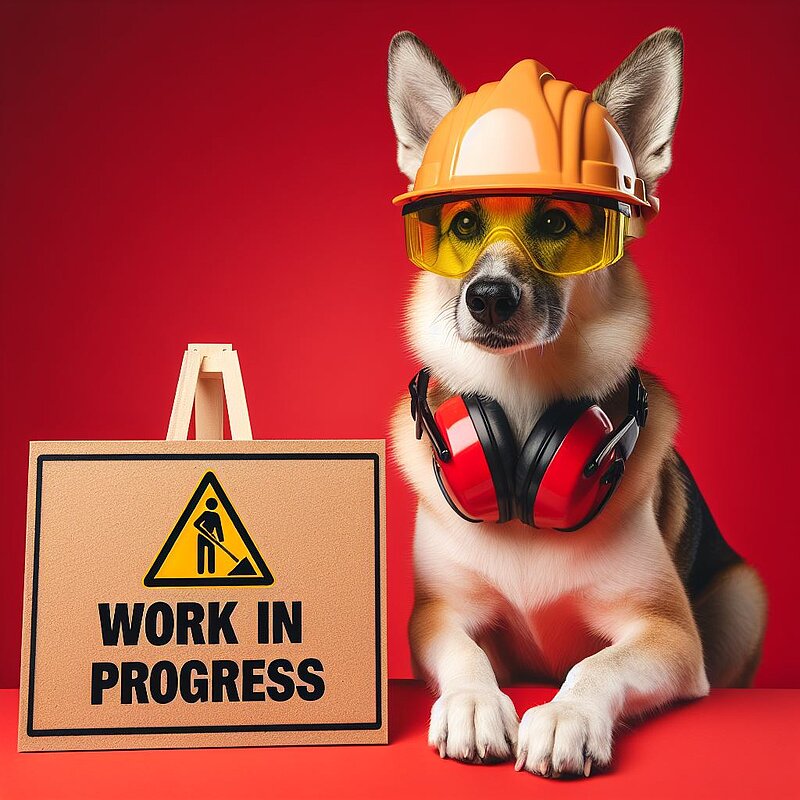
The charming Kerry Blue Terrier: an all-rounder with style
Origin and history
The Kerry Blue Terrier originates from County Kerry in Ireland and has a long and proud history. It was originally bred as a versatile working dog, used for hunting, herding and as a guard dog. While the exact history of its origins is somewhat unclear, it is believed that the Kerry Blue Terrier has been around for at least 150 years. Due to its abilities in various tasks and its distinctive appearance, it quickly became popular, both in Ireland and internationally.
Who is the Kerry Blue Terrier suitable for?
This breed is perfect for active people or families who enjoy spending time outdoors and want to do a lot with their dog. The Kerry Blue Terrier needs a lot of exercise and mental stimulation, so it is ideal for sporty people who enjoy activities such as jogging, hiking or agility training. It is also well suited to families with children as it is patient and playful. However, people who prefer a quieter lifestyle or have little time for daily grooming should opt for a different breed.
Character and temperament
The Kerry Blue Terrier is known for its friendly and lively character. It is intelligent, courageous and curious, which makes it an excellent companion. These dogs are very people-oriented and love to be involved in their family's activities. They are also vigilant and reliably protect their home without being aggressive. Due to their independent spirit, they can sometimes be a little headstrong, so consistent and loving training is important.
Appearance
The Kerry Blue Terrier has a distinctive appearance with its dense, wavy coat that shimmers in various shades of blue. At birth, the puppies are black, but the coat changes over time and reaches its final blue color around 18 months of age. The eyes are dark and the ears are small and V-shaped. Males reach a shoulder height of around 45 to 49 cm, bitches are slightly smaller. The weight is around 15 to 18 kg.
Grooming and health
The Kerry Blue Terrier's coat requires regular grooming to keep it clean and tangle-free. It should be brushed thoroughly at least once a week. A visit to the groomer is necessary every six to eight weeks to trim the coat and keep it in shape. The coat should also be checked regularly for parasites.
In terms of health, the Kerry Blue Terrier is considered a robust breed, but as with all breeds, certain genetic diseases can occur. These include hip dysplasia and certain eye diseases. Regular veterinary examinations and a balanced diet contribute to their health and longevity.
Exercise and habitat
The Kerry Blue Terrier needs plenty of exercise and mental stimulation. Daily long walks and playtime are a must. It is suitable for life in the countryside as well as in the city, as long as it gets enough exercise and activity. A house with a garden is ideal, but he can also be happy in an apartment if he gets enough exercise.
Training and education
These intelligent dogs learn quickly, but they can also be stubborn. Positive, consistent training with lots of praise and rewards is the key to success. Early socialization is also important to ensure that the Kerry Blue Terrier gets along well with other dogs and people.
Behavior with children and other animals
The Kerry Blue Terrier is an excellent family dog that gets along well with children. He is patient and playful, which makes him an ideal playmate. It can get along well with other pets, especially cats, if it is accustomed to them from an early age. However, you should be careful with small animals such as rodents or birds, as his hunting instinct may still be present.
Recognition by the FCI
Yes, the Kerry Blue Terrier is recognized by the Fédération Cynologique Internationale (FCI) and belongs to Group 3: Terriers, Section 1: High-legged Terriers.